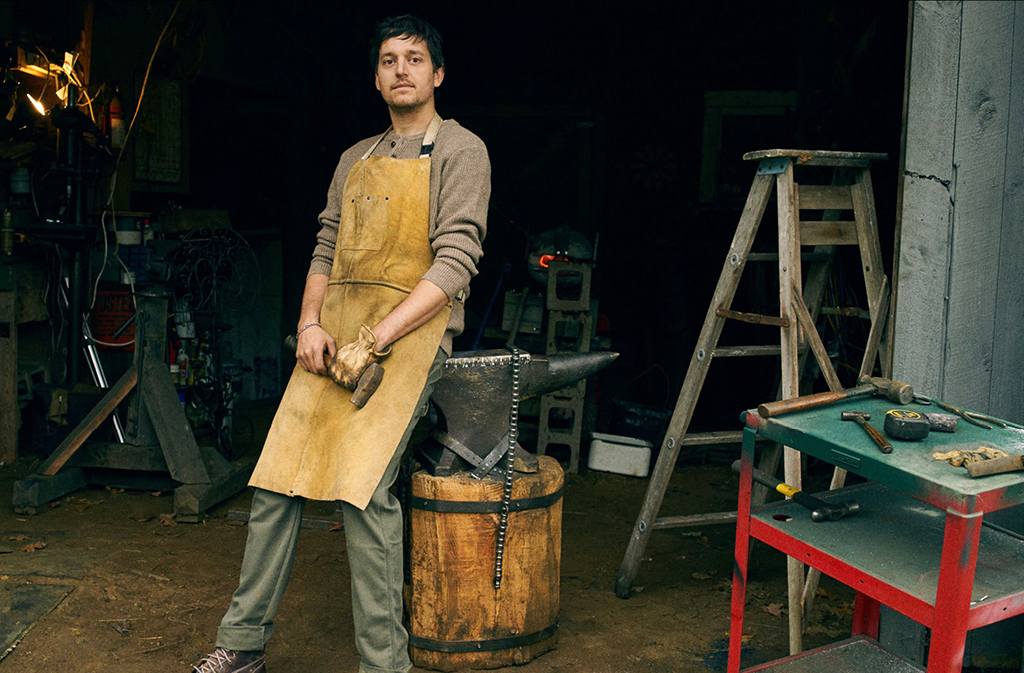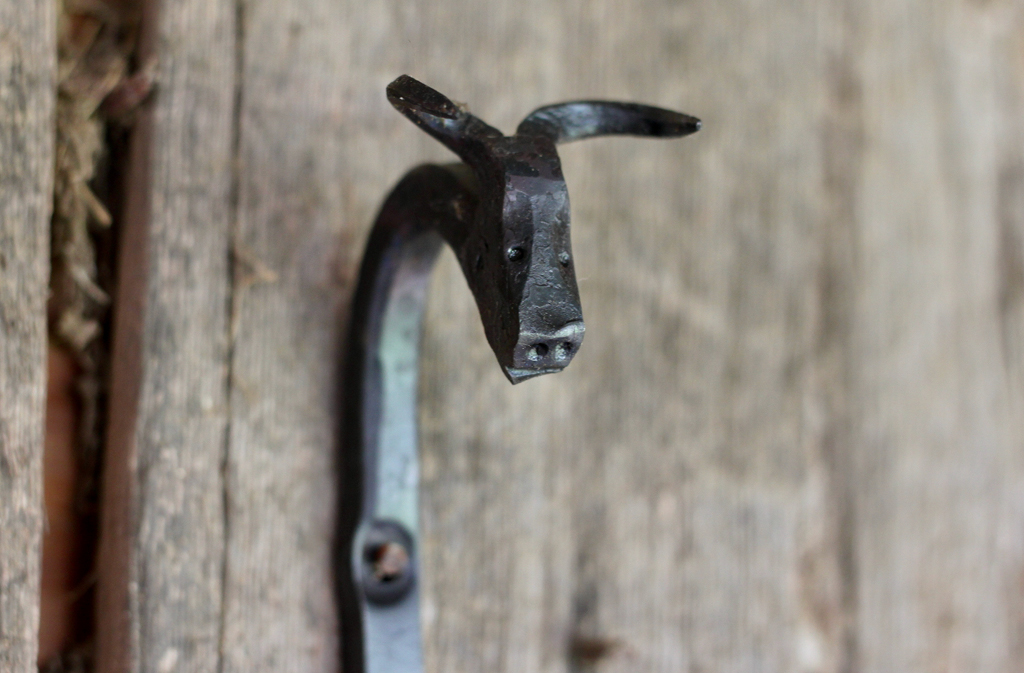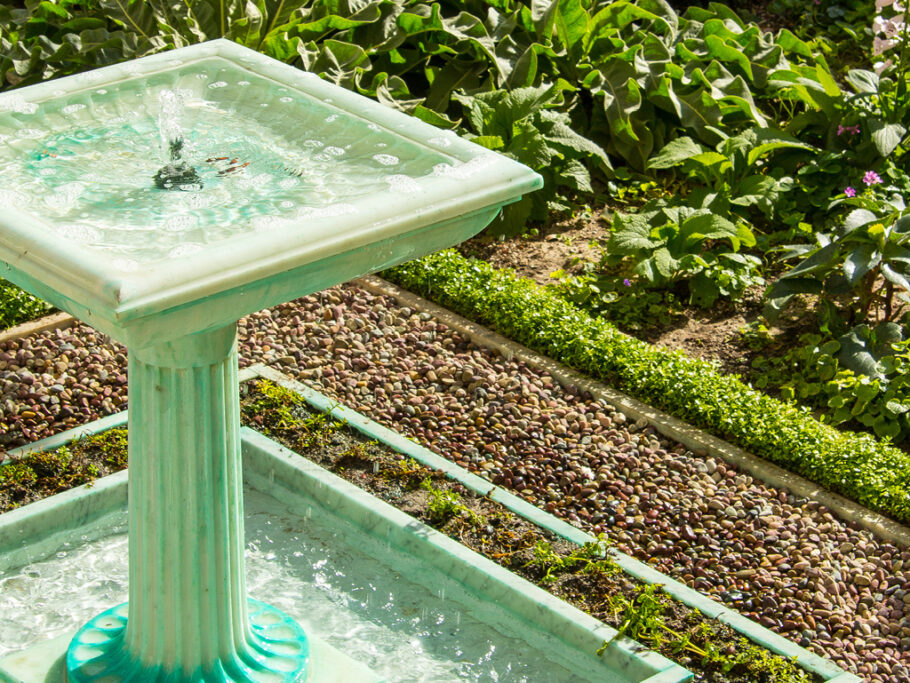Ancient Craft Meets Modern Maker
Interview with nick wicks moreau
Photography by selena fulham, unless noted
Nick Wicks Moreau continues his family’s blacksmithing legacy with his company, wicks forge.
What drew you to blacksmithing? How did you become a blacksmith?
I’ve always liked working with my hands and used to do woodworking with my father, who was a carpenter. When I went to grad school in Scotland, I knew I also wanted to have a creative outlet. I got a job working for an incredible blacksmith named Jim Whitson. It was great to learn from one of the top blacksmiths in the world about how to run a shop and create pieces.
It was a fun experience, but I figured I would get a “real” job after graduating. However, my grandfather, great-grandfather, and great-great-grandfather had all been metal workers. One day, I was cleaning out my grandfather’s garage, and I found his father’s anvil and tools. I knew that if I built a forge, I could be a blacksmith. I used most of my family’s tools and started working out of that garage, but the business wasn’t profitable. I was broke and saddled with student debt, so I got that “real” job in New York City. Soon after, my business started growing. I commuted to New York during the week and returned to Connecticut on weekends to fulfill orders.
My big break came when I was featured in Popular Mechanics. Suddenly, I was getting publicity and people were connecting with what I was doing. A few years after that article ran, I relocated to Maine and the business started to boom. I’ve got probably 100,000 pounds of tools and equipment, so I only want to move all that one more time before I die. [Laughs]

Where did you acquire all that?
Blacksmiths were among the original toolmakers. At Wicks Forge, we have the equipment to make tools and machinery, so we often make them ourselves. For example, we have a 50,000-pound hydraulic press, which we constructed in-house largely from scrap materials. We also bought a metalworking lathe from the 1870s on Craigslist. Every step of the way, we’re either using an antique piece of machinery or a homemade tool.
What are your most popular products? Which ones are you most proud of?
Over the last year, we’ve sold a lot of barbecue tool sets. And we sell an incredibly large number of fire tools, such as fireplace tongs and pokers.
Our letter openers are also popular. Even though they’re only around $20, I’m proudest of them because they were one of the first things I made when starting my business. People often buy them as gifts for loved ones to stay in touch while apart, and I love providing a very affordable handmade piece that has a lot of meaning. Positive impact is not always reflective of how much someone pays.
What is your forging process?
New products have their own process, which includes a lot of trial and error and swearing as you mess up. For established products, we have a “recipe” book for each product so that everyone can make it consistently.
For every job, though, the starting material is first. Metal usually comes in twenty-foot links, which you can’t stick on the fire. So the first step is to cut a link down to a more manageable length. Let’s say we’re making a hook that has a leaf on the end. We’ll start with a three-to-four-foot length of steel, heat one end, and then use different hammering techniques to create a leaf shape. Once that leaf shape is formed, we’ll use bending tools to create a loop on the leaf. Then we’ll cut the piece off to its final length and stick it back in the fire, heat up the other end, and start working it into a hook shape.
Every time steel goes into the forge, we have around thirty to sixty seconds to work it while it’s hot. We call that the hot work. An example of cold work is drilling holes into the piece so it can be screwed into a wall.

How challenging is the hot work?
There’s a saying that’s become popular, but it’s literal to us: strike while the iron is hot. You must heat the material until it’s soft enough to manipulate even a little bit with hammering. There’s an exponential learning curve for that. You must be both good and fast; if there’s one mishit out of hundreds of hammer hits, the piece is going to be ruined.
However, if you are futzing around trying to get it perfect, the piece will cool down and look awful. So I put new blacksmiths on a gradient to let them build confidence and a foundation of techniques that will allow them to work on more complicated processes. For instance, say you need to forge a taper, make a curl, and then do a bend. If you’re experienced and fast, you might do all that in one heat. if you’re not as experienced, it might be three heats. Practice makes perfect in this field.
What does handcraftsmanship mean to you and your business?
Blacksmiths used to be fixtures of the community by necessity. Hardware stores didn’t exist, so people got their nails, tools, and garden equipment from forgers. Today a town doesn’t necessarily need a blacksmith anymore—but there’s still a need for the handmade aesthetic. It’s awesome to use something handcrafted and personal, like this mug I’m currently drinking out of that a friend made. That’s missing to a large extent today. In building this business, I want us to bring back the important relationship between where things come from and the end user.
Do you feel like there’s greater interest in handmade crafts?
Yes. I find that people are always excited to meet a blacksmith, which shows that there’s an interest in these historical trades. There’s also been an explosion of makers on social media and YouTube videos, so everything’s a lot more accessible now.

How much of blacksmithing is art versus science?
To quote my favorite lyric of all time, from musician Tom Waits, “How you do anything is how you do everything.” I reflect on that a lot. I was never the greatest artist; I can’t draw to save my life. But as I started getting more into blacksmithing, I realized that every decision I make, especially regarding running a business—the types of products we decide to make and the types of designs we decide to use—is reflective of my worldview. And that is a form of art. Other blacksmiths do beautiful sculptural work; they just happen to be doing it with steel.
As far as science, it depends on what someone’s interest is. Some blacksmiths get really nerded out about temperature control or the various types of steel. That’s one of the wonderful things about the craft: there’s a whole spectrum of the art versus science, and sometimes there’s no way of avoiding it. For example, when I was building our hydraulic press, I had to learn all about hydraulics. I didn’t particularly care about that science, but I wanted to make cool stuff with my press, so, by necessity, I had to care. The flip side of that is once we had that press, the artistic possibilities seemed endless.
Where do you see Wicks Forge, and blacksmithing itself, a decade from now?
I’d like to see this upward trend for quality handmade products continue and small businesses continue to innovate ways to bring affordability into the handmade market. And I’d like blacksmithing to become relatively normal again. In fact, one of the things I’m proudest of is teaching young people a foundational skillset, which they can use here, at another shop,
or to start their own business. Several have worked here before continuing their journeys as craftspeople. It’s been a cool small-business success story in that sense.
We’re also looking for a larger space as we speak. If I’m able to get one, I’d love to open my shop up to the community every month to repair things for our neighbors, as blacksmiths did back in the day.
For more info, visit wicksforge.com























